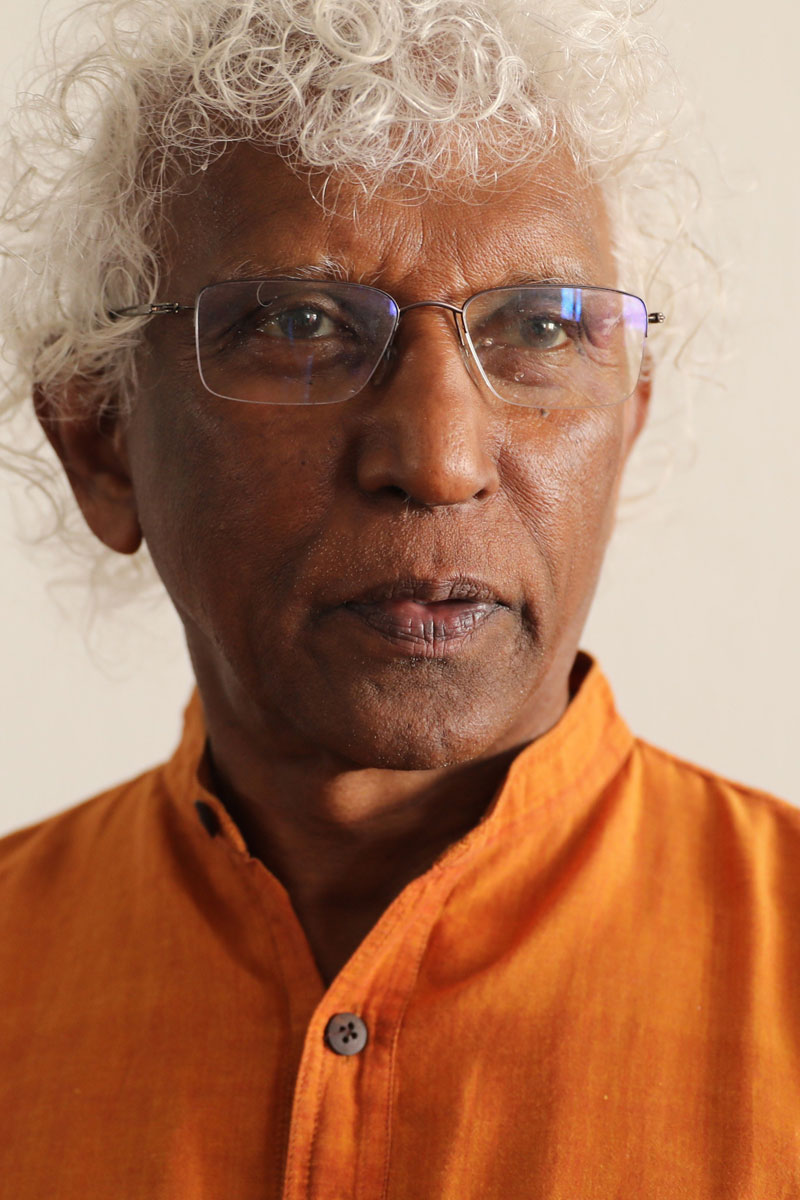Features
Deep State – Sow a Wind and Reap a Whirlwind
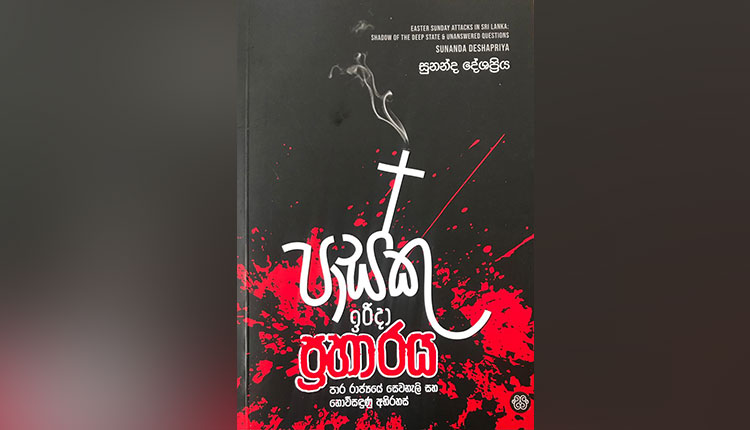
Col. (Retired) Parakrama Dissanayake
Former commanding Officer,
Military Intelligence
“If they did prosper and increase in riches, yet they should not long enjoy them themselves, but be pillaged and spoiled of them” Hosea 8:7
The above is quoted from the Bible and is self-explanatory. Since, the concept of Deep State in Sri Lanka is closely connected, to the Easter Bombing, the Bible verse has been referred to due to its significance.
For the first time in Sri Lanka, Deep State has been discussed publicly, by Sunanda Deshapriya, writing about it in his recent book about the Easter Attack. His book is about the fourth publication on the Easter Sunday attack. I have always had great respect for Sunanda as I had been reading his articles from the nineties.
Although I still have not read this book, skimming through it I think it is well researched. He refers to Deep State as ‘Paaraa Rajya’ in Sinhala. Attorney Kishali Pinto Jayawardena too has written about the danger of Deep State in her articles.
I wrote an article about Deep State immediately after Azad Moulana made a revelation on Channel 4. However I was advised not to, by my friends. I was also aware that a prominent journalist had to leave the country after it was alleged that he helped the Channel 4 research.
Definition and Extent of Deep State
There are many definitions to Deep State, its nature and activity, over a period of time. With research and activity, the term has evolved in many ways and descriptions. However, the concept originated from the Turkish word derin devlet. It was presumed, a secret network of military officers and civilians tried to preserve the secular order based on the ideas of Mustafa Kemal Ataturk. Some consider it as a part of the Gladio Organisation to influence Turkey to be part of NATO, during the Cold War.
A more formal definition would be, “an alleged secret network of especially non-elected government officials and sometimes private entities, as in the financial services and defence industries, operating extra legally to influence and enact government policy. The power of Deep State comes from experience, knowledge, relationships, insight, craft, special skills, traditions, and shared values”.
In very simple terms, it is ‘a State within a State’. Or ‘criminal’ or ‘rogue’ elements that have somehow muscled their way into power. Many countries have experienced Deep State in many forms mostly associated with the military, intelligence, influential business community or cartels or influential lobbyists.
In Deep State, the most common shared value being Patriotism or Nationalism, fits the profile of any military intelligence organisation including Sri Lanka. They go to the extent of changing public opinion through paid journalists, and media outlets, influential politicians and others. In today’s context, the Fifth Estate which is also very powerful, in changing public opinion. These Deep State elements, try to be away from public scrutiny through the cover of ‘Betrayal’.
Thus they become unaccountable and opaque. When in operation, the spectre of Deep State threatens to thwart the will of the people and undercut constitutional authority. Any government which promotes Deep State, for short term gain in politics, is either unaware of the concept and its implications or its criminal nature. Any whistle blower is silenced, using enormous resources and tools available to the Deep State element.
In USA. those who were involved in the January 6, 2021 attack on Capitol Hill, believed there was a Deep State conspiracy to prevent Joe Biden from becoming the rightful President of USA. There was rioting, vandalism. looting, assault, shooting, arson and attempted bombings during the attack.
Deep State, through all the world experience clearly indicates a threat to the state, democracy and the people, creates mistrust, suspicion and fear amongst the population and finally could result in the breakup of the state. It always has negative connotations. Deep State controls many countries. Closer home, Pakistan is a clear example of Deep State, associated with ‘Religion and Army’.
The long term, end result of Deep State is the fall of the Constitution and rise of a shadow government. This threatens the very fabric of society more than any act of terrorism. The enemy is always within and cannot be controlled due to many obligations the government has towards this rogue element. It begins with overseas postings and courses to selected individuals and ends up with super luxury life, influence and perks to those who form the elite and most trusted group of the government. This clearly was evident since the previous presidential elections in 2019 and from 2010.
Deep State in Sri Lanka
Deep State is hardly known, discussed or observed in any circle or community in Sri Lanka, including the military. Certainly, not in the public domain. Reasons being public backlash, threat to life and ignorance of the concept.
Deep State activity, in recent years, was first evidenced during 88-89 insurrection. Elements from the military and other law enforcement agencies were tasked with or by themselves decided, to carry out extrajudicial activity. Batalanda and Suriyakanda stand out and were the most infamous. This also happened in many other areas of the south.
During my tenure of service, as the senior intelligence officer, in the North and East, so many desperate mothers, sisters and wives were assisted in some form, to find or trace those missing. Unfortunately not much was possible. There were lists given by ruling party politicians just to ‘Eliminate’ youth whom they considered anti-social elements or subversives. Many youth were eliminated without any trial or judicial proceedings and that’s no secret at all. In some local areas the government was actually the military or the security forces. It was a government within a government, in most local areas.
Going beyond, the next stage was when the when Eelam War 2 broke out in June 1990. That’s actually the time when the White Van culture came about. Intelligence officers along with militants other than the LTTE, from various groups supported the security forces to identify terrorists. Abductions were taking place in the Jaffna peninsula, in white vans. It was, I think, the Uthayan and Eelamurasu newspapers that exposed the existence of white vans. The Uthayan newspaper office was hit by an air raid subsequently in 1990, and it was attacked about six times with the last time being in 2013. Eelamurasu was taken over by the militants.
In 1994, during the local government elections in the East, in March, the intelligence played a major role in help fielding candidates. In fact, a ruling party politician was involved in handing over money to those who stood for elections. Many of those elected were subsequently killed by the LTTE. Ever since, Deep State activity was carried out mostly by elements of intelligence units.
Even Heads of State believed in whatever the Intelligence reported. No questions were asked. That was quite natural, as they had implicit faith and trust in those agencies. Many have been the occasions when the Head of State and the country at large had been deceived by these agencies. The most horrible result of all this was the Easter Bombing in 2019.
The infamous Millenium City episode in 2001 was a text book example of how Deep State activity operated and executed, unprofessional but successful. The military intelligence was able to cover up their misdoings and unprofessional conduct big time. This was revealed even recently, by FM Sarath Foneka on July 21, 2024 during a news interview. The President, the Defence apparatus, the public and the country at large, were led down the garden path, deceived and public opinion manipulated in favour of the wrong doers.
Large amounts of public resources including media was extensively used to cover up an illegal operation. I was one who, suffered most, although I had absolutely no part to play in the drama. It was a turning point in Deep State activity in Sri Lanka. In actual fact, it was from that time onwards, that Deep State started to be treated as a defining tool in the Defence apparatus.
With this, the military intelligence became a game changer in military-political activity at National level. Its rise was phenomenal and unchallenged. Those involved in the manipulation, was smart enough to contribute to the fall of the government. Incidentally, the very same persons who manipulated the government then, brought about its fall 20 years ago.
They were able to comfortably work with the same person whom they ousted as Prime Minister then, later to become the previous President. A monster was created and nurtured for political gain as never before. The same could happen now too. And it’s not going to be a surprise to me at least. Covert attempts will be made use of to drum up the ‘Patriotic’ cause.
How deep is Deep
The affect and impact of Deep State in the Easter Bombing is now clearly evident. How deep is Deep State, is a matter of extreme interest. From what has transpired so far, from all investigations and commission reports, it is evident that there was a clear attempt by the military intelligence and other connected agencies to cover up Zahran and his group activity. There is no doubt about that. The only doubt is, whether they were in fact involved in the planning and execution of the attack.
The cover up activity is so strong that, even the Commander of the Army, a very noteworthy and highly respected professional was deceived by reports on the Vavunativu Killing on November 28, 2018 and the recovery of the arms cache at Lacto Estate, Vanthavillu, on January 27, 2019. Rogue elements have been in the pay roll of military intelligence and the tax payer of the country has paid to maintain a set of murderers.
Although, the Government in office was that of President Sirisena, the military intelligence loyalty has been to the one out of office. So, in other words, the latter was working and being directed by an element which had no responsibility on governance. Among the questions that needs answers are:
- Whom was the military intelligence working for, with the Zaharan group?
- Was it the Commander of the Army, a foreign element or a local element?
- Who authorised the activity with the operations and projects in general and activities of the Zaharan group in particular?
- Was the military intelligence loyal to the State and the Constitution?
- Who authorised payment for the Zaharan is group and what threat were they assigned to counter?
Strategically, tactically and operationally, the Directorate of Military Intelligence and all military intelligence personnel work on the directives of the President/Defence Minister who defines who, which, what, how, where and how much the threat is, to the State. The latter, in turn, issues directives on the advise of various defence specialists. It seems most of those protocols have been breached when dealing with the Zaharan group.
There could have been other such instances too. Even the President incumbent at that time seems to have been reluctant to divulge information about what knowledge he had. Instead, it appeared, he was more comfortable to pay rupees one hundred million to the victims. Thus the Easter Bombing was deeper than Deep State and may need a new definition.
On the Easter Bombing
Till the recent announcement of Presidential Elections it seemed much water had flowed under the bridge, following the Bombing. Commission Reports, Select Committee Reports, Investigations and four books written so far and nothing much happened or deliberately put on the back-burner. There is renewed hope for the victims and justice for the country now.
Some areas for consideration amidst the possibility of evidence being tampered and suppressed over a period of five years are:
= Auditing the Secret Service Fund (SS Fund). A large sum of money allocated to the State Intelligence Service and the Military Intelligence for purposes of intelligence. The only person who can audit this fund is the President. The military intelligence SS fund may never have been audited since its origin in 1990. An in depth study of how the fund was utilised over a period of about 10 years and for what purpose, will indicate the true nature of its use or misuse. However, traces of its use could be already tampered with.
= Assessment of Special Equipment inventory. Over a period of time, a large arsenal of special equipment has been purchased for intelligence purposes. Its true nature and use is privy only to a few individuals. A study needs to be done on its legal use and capabilities.
= Scrutiny of Human Resource Index Register. A variety of human sources are utilised as intelligence sources. It is mandatory that a source index is maintained for accountability. It has to be assessed whether it has been maintained along with true and accurate details of human resources including pseudonyms, along with reports submitted, payments made and results obtained. Pseudonyms are conveniently misused as a cover for illegal activity. This register can be cross checked with the SS Fund payment details and as a supporting document. This could be a major source for accountability and transparency to uncover suppressed evidence.
= Conducting of Joint investigations. A police or CID Investigation per se may not suffice. Handpicked personnel from the military too should be included. It is these personnel who will know or assist on the internal workings of the army, like, procedures regarding communications, transport, weapons, rations pay and others. Without this expertise, much can be suppressed or hidden as is normally the case.
= Appointing Special Commissions. It is known that these commissions are only fact finding and sometimes inconclusive with no powers of punishment. The public should be invited to give evidence. The journalists and others who had researched on the incident, may have brought out more findings through their research, than in any formal investigations as their informal source base is much stronger than a formal one. .
Knowledge and acknowledgment of Deep State will be more beneficial to the country rather than being ignorant of it. Other Deep State activity regarding attacks on journalists and killings too could be laid bare through this exposure. It will benefit the future good of the Country and be a genuine eye opener to the Defence establishment. Renewed attempts, as always, to shoot the messenger cannot ruled out though.
“Patriotism is the last refuge of the scoundrel” Samuel Johnson 1709 – 1784
para.stormsat@gmail.com
Features
“Independent” Prosecutor’s Office: Myth and Reality
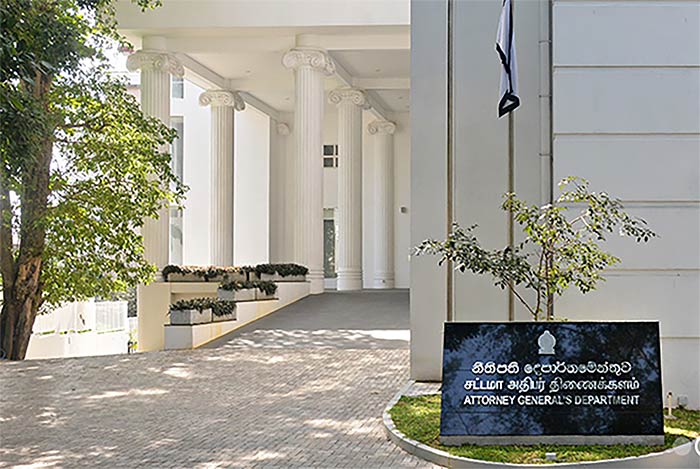
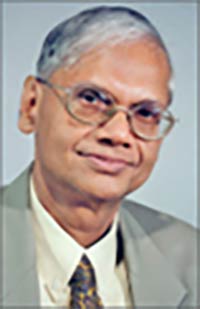 By Professor G. L. Peiris
By Professor G. L. Peiris
D. Phil. (Oxford), Ph. D. (Sri Lanka);
Quondam Visiting Fellow of the Universities of Oxford, Cambridge and London;
Former Vice-Chancellor and Emeritus Professor of Law of the University of Colombo.
I. A Cornerstone of the Legal System
The institution of criminal proceedings is of vital concern to the public. Irrespective of the outcome of proceedings, subjection of a citizen to criminal litigation is fraught with grave consequences, including psychological trauma and impairment of social reputation, quite apart from the expenditure incurred in defending a criminal action.
The law, therefore, goes to considerable lengths to ensure that recourse to criminal proceedings is the sequel to an informed and well-structured process which includes careful consideration of available evidence in a spirit of independence and detachment, far removed from partisan considerations.
II. The Role of the Attorney-General
In our legal system this responsibility belongs to the Attorney-General: it is for him to bring his mind to bear on the entirety of material emanating from police investigations and to make a dispassionate judgment whether the evidence at his disposal, in the surrounding circumstances, warrants the commencement of criminal proceedings.
The solemnity of this burden is underlined by the traditional formulation, in decided cases in our country as well as in other jurisdictions, that the Attorney-General, in performing this function, acts in a quasi-judicial capacity.
This calls for a clear separation of his mindset from that appropriate to the discharge of his other responsibilities. The principal law officer of the Republic, he is the chief advisor to the Government of Sri Lanka, and it frequently falls to his lot to defend, before the courts, senior representatives of the government in Fundamental Rights, writs and other proceedings.
Nevertheless, it is a sacred and inviolable principle that, when it comes to deciding whether criminal proceedings should be launched or, when once begun, should be discontinued, against any defendant or group of defendants, this decision should be demonstrably bereft of any tinge of political or other extraneous element.
This is one of the core values of the system of criminal justice in our country and, indeed, an indispensable pillar of the Rule of Law.
III. Ample Scope of Prosecutorial Discretion
A pivot of our law is the principle of vires or jurisdiction, which requires that a statutory power must necessarily be exercised by the authority on which it is conferred by the legislature.
This is the rationale of the concept of prosecutorial discretion vested in the Office of Attorney-General. Discretion to determine the sufficiency of grounds to institute a prosecution or forward an indictment is that of the Attorney-General alone, and any usurpation of that discretion strikes at the very foundation of the system.
IV. Limiting Criteria
This does not mean, however, that the Attorney-General’s discretion is total or absolute, and altogether beyond the reach of the courts.
It is a salutary feature of our law that Sri Lankan courts, buttressed by judicial experience elsewhere, have formulated a series of criteria which operate as the limits of this discretion and enable intervention, with due restraint, in a limited category of situations.
A trilogy of judicial pronouncements by the Court of Appeal of Sri Lanka(Sandresh Ravi Karunanayake v. Attorney-General CA/Writ/441/2021; Duminda Lanka Liyanage v. Attorney-General CA/Writ/323/2022); Nadun Chinthaka Wickramaratne v. Attorney-General CA/Writ/523/2024) have rendered yeoman service to our law in this regard. The value of this approach lies in its essential sense of balance.
These judgments, by Sobhitha Rajakaruna J., now establish with clarity the frontiers of judicial review in respect of prosecutorial discretion of the Attorney-General.
The applicability of judicial review, in this context, has been accepted unequivocally by our courts: Victor Ivan v. Sarath Silva, Attorney-General (1998) 1SLR 340.
Its ramifications straddle a variety of settings. Where, for instance, the initiation of criminal proceedings is entirely unsupported by any evidentiary basis, the indictment may be impugned in judicial review, by the writ of certiorari. In the relevant academic literature, in particular the writings of Professor Sri William Wade, it is identified as a jurisdictional flaw, in that action in the absence of evidence is considered to have been taken without jurisdiction.
Similarly, prosecutorial discretion exercised by the Attorney-General may be vitiated by a range of factors including plainly discernible bias indicative of mala fides, patent error, consideration of irrelevant matters or failure to consider relevant material, grave procedural illegality or irregularity during the decision-making process – blemishes which, severally or in combination, may amount to abuse of process and, therefore, a potential miscarriage of justice.
Recent trends in Commonwealth law suggest scope for expansion of the ambit of judicial review on the broad ground of palpable unreasonableness (in terms of the well-known Wednesbury test), but this is an extension to be effected sparingly.
While these grounds admit of adequate flexibility in relation to judicial review, there is need for uncompromising insistence on the exclusion of any form of political intervention, or even a well-founded suspicion of it, in the interest of preserving public confidence in the integrity of the prosecutorial process.
V. Contemporary Developments
In recent weeks there has been widespread interest in policy perspectives, and timely changes in the law, in this field.
These developments provide the backdrop to the media statement by the Ministry of Justice on 10 February regarding the proposed establishment of an “Independent Prosecutor’s Office”. What is contemplated, as an initial step, is the appointment of an “Expert Committee” to prepare a Concept Paper on which the views of civil society and the public will be invited.
The composition of the proposed Committee has been announced. It will consist of “1. The Attorney-General or two nominees of the Attorney-General; 2. The Secretary to the Ministry of Justice; 3. A senior judge in the judicial service; 4. The President of the Bar Association of Sri Lanka or his nominee”.
While a committee, so constituted, may be appropriate for the preliminary task of suggesting the outlines of the concept, its personnel, clearly, cannot be involved in operationalising the idea, as it moves forward. The Secretary to the Ministry of Justice is a political functionary, subject to control by the Executive; a member of the Judiciary can play no part in decisions as to the suitability of instituting prosecutions; defending counsel in criminal prosecutions will be drawn from the unofficial Bar.
Sri Lanka had, at one time, a Director of Public Prosecutions (DPP). The experience of the Crown Prosecution Service in the United Kingdom offers valuable guidance. The Government’s proposal, however, seems to go beyond the appointment of a Director and to envisage a comprehensive prosecutorial mechanism coexisting with the Office of Attorney-General.
VI. Critical Policy Issues
A mere change of nomenclature offers no more than a superficial and unconvincing solution. The experience of the DPP in our country was not an altogether happy one and, in any case, lasted only a short time. If susceptibility of the Attorney-General’s Office to political pressure is the core issue, it is hardly circumvented by the proposed supplementary mechanism.
Many structural issues naturally arise: What are the lines of demarcation contemplated? The new Office, if it is to serve a useful purpose, must obviously enjoy substantial independence from the Attorney-General, but a complete severance of the nexus, in terms of coordination, is unrealistic.
What safeguards, not explicitly spelt out in relation to the Attorney-General’s Office, are intended to apply to the proposed new Office? Will the Office of the Independent Prosecutor be served by members of the Attorney-General’s Department? If so, how will clarity be achieved in the delineation of reporting obligations? How will overlapping and interlocking lines of authority be dealt with? Since it has been made clear that the Attorney-General’s Office per se, will survive the proposed innovation, will there be some measure of erosion of the Attorney-General’s constitutionally entrenched functions? If this is the case, a piecemeal approach will not be feasible.
These are complex issues which will no doubt engage the intense interest and vigilance of the public, as the proposed reforms move forward.
Features
Rani’s struggle and fight of many mothers
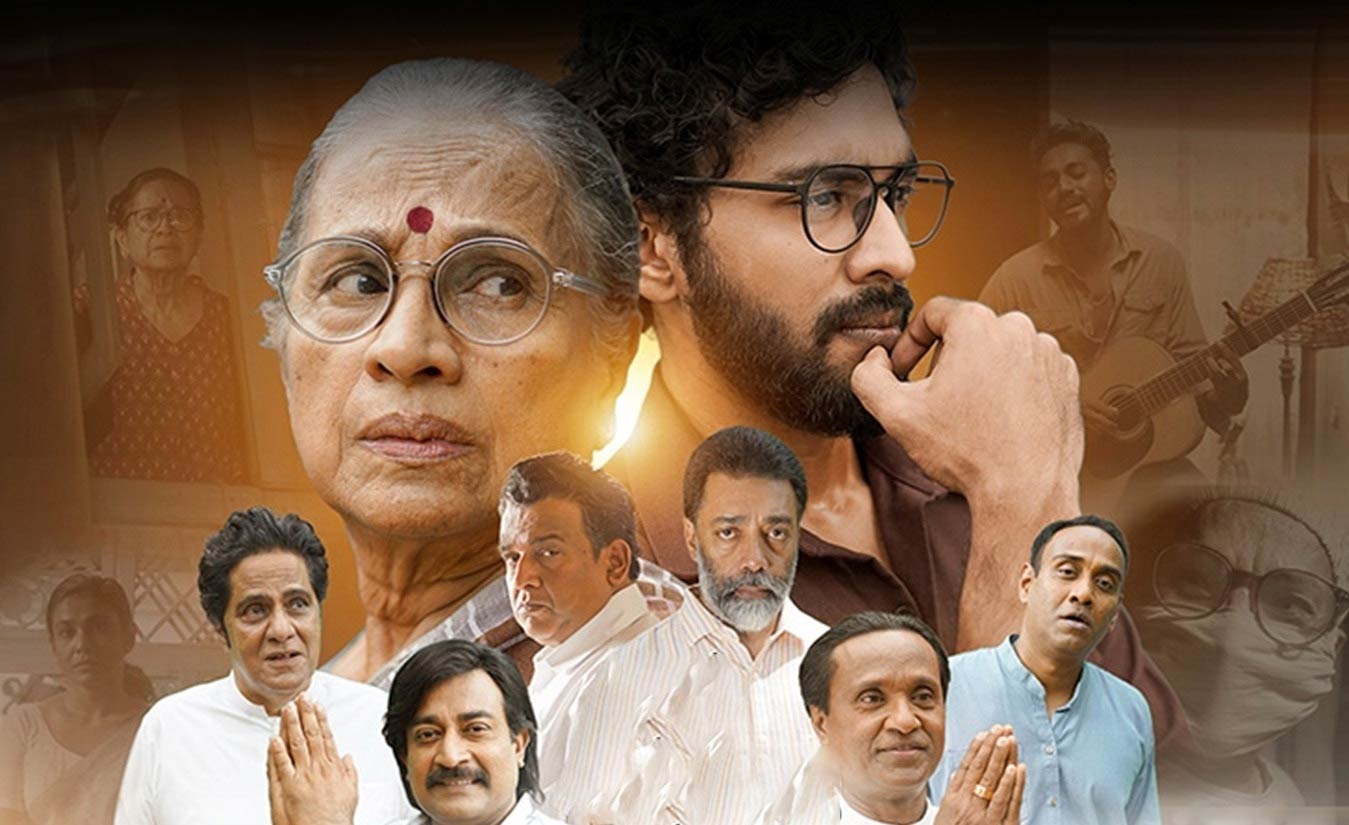
by Anushka Kahandagamage
Unlike Manorani, mothers in both the North and South, whose children disappeared, had no means of reaching out to a state minister in the dead of night, begging for help or even sharing the devastating news of their children’s abduction. They did not have the privilege of calling on influential figures to intervene in their grief. This contrast does not lessen my empathy for Manorani, but rather highlights that a mother’s pain is universal, despite societal divisions or hierarchies. A thought that has been occupying my mind since the making of Rani is why a film is being made about Manorani when so many mothers in this country have lost their children. As Malathi de Alwis highlights, many women involved in the Mothers’ Front never had the chance to take the stage, which was controlled by men. Malathi also argues that Manorani’s special opportunity on that stage was due to her professional background as a medical doctor and her elite status.
Powerful Cinematic Experience
Rani, undoubtedly a powerful cinematic experience, left me frozen, its impact lingering within me. It took me back to the 1987-89 period, a time of terror, when I was just a first grader. The trauma from that era has stayed with our generation ever since. The film brought back events that were slowly fading from my memory, yet still lingered in my nightmares.
Challenging the official memory
Handagama and others involved in the making of the film succeeded in bringing a dark period, which was absent from history books, into the public consciousness or I would say, to the popular discourse. The official memory crafted by the then government regarding this horrifying chapter of history is mostly one-sided, glorifying the rulers while carefully erasing stories that do not align with their narrative. The film uncovers the painful truths, complicating the official narrative constructed by the government. It reveals that history is far more intricate than the simplified version presented in state-crafted accounts.
Subtitles
Creating a film about a dark chapter of the past, one that isn’t recorded in history books, and making it resonate with the public is a formidable challenge. However, the increasing number of people attending the film is a testament to its success. A common challenge faced by artistic films or those addressing complex social issues is their lack of popularity, which often prevents them from entering collective memory. Yet, Rani has effectively overcome this obstacle, achieving both widespread attention and relevance. While the film has undoubtedly succeeded in establishing itself within popular discourse and bringing attention to a dark, often overlooked period in history, the absence of Sinhala and Tamil subtitles presents a significant drawback. These subtitles would have made the film more accessible to a broader audience, particularly those who are directly impacted by the events depicted. Without them, a large segment of the population, including Sinhala and Tamil speakers, may have found it difficult to fully engage with the content and its emotional depth. Subtitles could have enriched the film’s reach and impact, fostering a deeper understanding of the complex and painful history that the movie seeks to bring to light.
Female protagonist
Making a woman the protagonist is an essential reflection of contemporary demands in cinema. Across the globe, there has been a significant shift toward promoting gender equality in film, with an increasing emphasis on strong, multifaceted female characters. This demand is not only a response to the changing social dynamics but also an effort to give a voice to women whose stories have often been sidelined in mainstream narratives. The focus on female protagonists ensures that audiences see a more balanced and inclusive reflection of society on screen.
The Ending and Accountability
The film would have had a more impactful conclusion if it had ended with the peaceful scene of the two women and the child on the beach. This moment was emotionally powerful and seemed like the natural conclusion to the story. However, the final sequence where the police officers are in their casual clothes, drunk and plotting the abduction of Richard, drags on far too long and felt like forcefully imposed. Instead of taking the audience to a peaceful ending, it inadvertently starts to irritate the audience due to its excessive length, detracting from the overall emotional tone of the film. As previously mentioned, the prolonged nature of this scene feels unnecessary and could have been condensed or omitted to maintain the film’s pace and emotional resonance.
In this final scene, perhaps the filmmaker intended to highlight the multiplicity of narratives (as is common in the post-modern era), but it fails in many ways. I strongly object to this scene, as it makes the rulers unaccountable for the murders and reduces the event to a toxic masculine portrayal of the police officers involved.
Features
Excellent Budget by AKD, NPP Inexperience is the Government’s Enemy
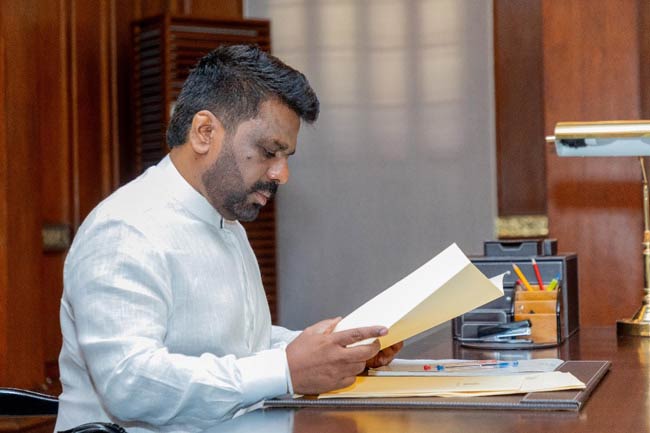
by Rajan Philips
President Anura Kumara Dissanayake has delivered an excellent first budget. It could easily be described as the best budget so far this century and presented in the most dire economic circumstances in Sri Lanka’s modern history. Following his consummate performance in parliament, the President waded into a post-budget forum and joined the country’s economic experts to “dissect new Govt’s maiden budget,” as headlined by the Daily FT, one of the sponsors of the event. Whether one agrees with him or not, there is no question that AKD has been listening to those who knows the subject, has diligently done his homework on the budget file, and knows what he is doing,.
The problem he faces is that he cannot be doing homework on every file for the entire government, and he must find a way to quickly address the collective inexperience of his cabinet. He should not let this inexperience become the enemy that kills the government from within. Hopefully, he will find a way to address this within the framework of the budget and in the delegation of ministerial responsibilities for its implementation.
Somewhere in the budget, the President refers to economic decentralization, to deconcentrate the top heavy Western Province. Unfortunately, the corollary of political decentralization could not find its place in the text. Equally important, the President should also pay attention to ‘cabinet federalisation’ (AJ Wilson’s description of one of DS Senanayake’s quite a few master traits), and more so as he moves ahead to implement the budget proposals.
Ultimately, the success of the budget will be measured in political terms. Read, electoral terms. AKD’s and NPP’s detractors will be winding themselves for political wrestling in the local and later the provincial council elections. The NPP could be expected to hold its ground, but not necessarily all two-thirds of it. It should not at all be strange if the NPP gains ground in the North and East even as it loses some of it in the South. To keep the inevitable losses to the minimum, the government must eschew any and all complacency, which, modifying Mao’s famous Redbook take on it, could be described as the enemy of elections.
Geopolitically, paraphrasing the French Marxist Regis Debray, the NPP government must have its overhead antennas fully alert, but its feet firmly planted on the ground in Sri Lanka. The government cannot avoid being distracted by the global tumults that Donald Trump is creating day in and day out. There will be ripples, even waves, around Sri Lanka depending on what the Modi government decides to do in India to harmonize with the Trump Administration in Washington. Even so, the government’s primary preoccupation in the context of the turmoil in America should be to protect for as long as possible Sri Lanka’s exports to the US which are significant for Sri Lanka’s forex earnings.
At the same time, and consistent with the budget objectives, even as it diversifies its exports the government must diversify its importers. For the next four years, as Trump unfolds his madness, there will be responsive realignments in the Global North even as there will be reconsolidations in the Global South. The NPP government will have to navigate Sri Lanka through these currents without being smothered by them.
There are of course the self-proclaimed Rajapaksa nationalists who want to hitch their broken political wagons in Sri Lanka to the passing hegemon in America. They are in fact ethno-narcissists just like – but writ-small – the racial narcissist that Trump is. Ridiculous as these forces and their politics might seem, indeed as they are, the government should not underestimate their potential to do harm even by accident. Look at Bangladesh to see how political fortunes can dissipate fast, even though the NPP government is in no way comparable to Sheikh Hasina’s rotten government. The eternal home truth is the quick rise and the quicker fall of Gotabaya Rajapaksa.
Setting the Budget Context
The budget speech outlines as its backdrop the 2022 economic crisis that has now become the Rajapaksa era legacy, and as its context the overwhelming verdict of the people in the 2024 presidential and parliamentary elections. In this context, the President calls the budget both “historic” and “challenging,” because the government has to not only lay the foundation for fulfilling the people’s aspirations, but also to dispel “the wrongful picture (of us) created by the myths and malicious political propaganda against our economic policy and vision.” “We have succeeded in that,” the President asserted.
The government has proved its expectant critics wrong and stabilized the economy. All the indicators confirm that – the relatively stable exchange rate at one USD for LKR 300, and not LKR 400 as recklessly scare mongered; the lowering of the Treasury bill rate (8.8%) and getting inflation under control; forex reserves rising past USD six billion; finalizing agreements over debt-restructuring; and most of all keeping essential goods available and avoiding queues. In fairness, the credit for starting the process of economic stabilization belongs to Ranil Wickremesinghe, but post-election expectations in political circles have been that things will start to unravel due to NPP’s inexperience and even incompetence. That did not happen, and President AKD and the NPP government are justified in claiming credit for it.
Mr. Wickremesinghe may have even fancied that another economic crisis this time under an NPP government would give him a second kick at the can of power. No such luck. RW is now part of a team of exes – former ministers and presidents including Maithripala Sirisena – trying to figure out a way to stay relevant in today’s politics. Looking at this aging crowd outside parliament and its slightly younger version in the opposition within parliament, the NPP might fancy its chances of retaining power for more than one cycle of elections. But what the NPP has to contend with ultimately will not be ill equipped politicians but a frustrated electorate.
Apart from President AKD’s versatile feats, the NPP government has little to show to keep the people contented. Recurring rice shortage, the shortfall in coconuts, and the power outage blamed on a monkey tripping off a transformer have certainly taken the shine off the government. Looked from the other end, rice, coconuts and the power outage seem to the only shortcomings that the government is being picked on by media pundits and the political class. But what should concern the NPP government is that any one of them (rice, coconut or power), all of them together, or any similar shortages or failures, are enough to rile the people and bring down a government. Not long ago, it was called aragalaya.
Budget as Political Reset
The budget speech lays down the principles underlying the government’s approach to the economy: sectoral growth sustained by participation and even distribution on the supply side; and balancing roles for the market and the government on the demand side. A GDP growth rate of 5% is targeted for the medium term, predicated on a strong export sector performance while maintaining price stability and ensuring social welfare. Promoting investments, leveraging logistics, revamping tourism, digital transformation of the economy, and unleashing SME potentials through new credit structures are highlighted as the main growth poles. Allocations for health, education, food security, and social benefits are intended to rebuild and strengthen country’s social welfare system.
There is emphasis on Regional Development, including the assurance of special programmes for the Eastern Province, the Malayaga Tamils, and the Northern Province, but there is no mention of Provincial Councils and Local Government bodies and their agency roles in regional development. Regional industrial zones are identified including the promotion of Chemical Manufacturing in Paranthan, KKS and Mankulam in the Northern Province, Galle in the South and Trincomalee in the East. If some of them were to materialize the North and East might be seeing state sponsored industrial activity after more than 70 years when GG Ponnamabalam was Minister of Industries and Fisheries.
Auto Parts and Rubber Products manufacturing is also identified for promotion through industrial zones. What is not clearly indicated is whether new regional industrial initiatives will be tied to the export sector without which they may not be viable, as past experience has shown. Also, on the export front there is no identification of specific products and target markets to match the significant export sector growth that is being championed. Generally, for industries, there should be guardrails for minimizing and mitigating adverse environmental effects.
The budget rightly focuses on the modernization of public transport. Specific projects are identified for bus transport in Colombo and for the rail sector, including the revamping and the extension of the KV Line, multi-modal transport terminal in Kandy, and the expansion of the Thambuththegama Railway Station to function as a hub for transporting agricultural products. Large scale transport projects and rail transport are invariably the responsibility of the central government, but bus transport operations including those in Colombo and Kandy are better assigned to provincial and even larger municipal governments.
The budget provides for settling the legacy debt of the Sri Lankan Airlines (SLA) in the hope that SLA would hereafter become a viable enterprise. For other SOEs, the budget is proposing the setting up of a Holding Company again with the hope of revitalizing the mostly under-performing State Owned Enterprises (SOEs). Whether this approach is motivated by patriotic sentiments or political calculations, there is little support for it from past experience, except for enterprises in the crucial servicing and energy sectors.
The budget gets quite specific in its proposals for the agricultural and food sectors, especially rice and coconuts. At long last, there is official admission at the highest level that there is no data and information system for the “entire value chain” from paddy production to rice consumption. There is no immediate solution to this except the assurance to find one through the ADB funded “Food Security Livelihood Emergency Assistance Project” and a related World Bank project.
Coconuts are easy to count and difficult to hide. Some 4,500 million nuts are the projected demand for 2030, with 2,700 for the coconut industry and 1,800 for household consumption – at one per household per day. The problem is with production and the budget is allocating money for high yielding seedlings to be used in a new Northern Coconut Triangle extending from the coconut rich Northwestern Province, recommended by the Coconut Research Institute and mirror imaging the long established Southern Coconut Triangle. Better later than never, even when it comes to nuts.
All in all, the budget provides a good framework for the NPP government to reset its political road map. To succeed, the resetting must involve delegations at the ministerial level and following through to local communities and political grassroots. Equally important will be the medium in between, and the challenge to the NPP government is in resurrecting and using the currently defunct provincial and local government agencies.
-

 News5 days ago
News5 days agoCommercial High Court orders AASSL to pay Rs 176 mn for unilateral termination of contract
-
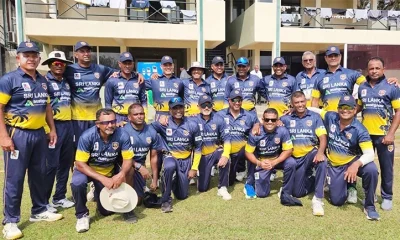
 Sports4 days ago
Sports4 days agoSri Lanka face Australia in Masters World Cup semi-final today
-
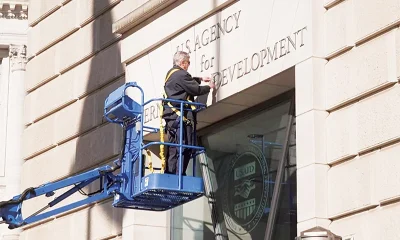
 Features6 days ago
Features6 days agoUSAID and NGOS under siege
-
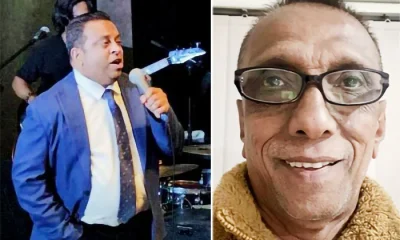
 Features6 days ago
Features6 days agoDoing it in the Philippines…
-

 Midweek Review5 days ago
Midweek Review5 days agoImpact of US policy shift on Sri Lanka
-

 Business6 days ago
Business6 days agoDialog delivers strong FY 2024 performance with 10% Core Revenue Growth
-

 News4 days ago
News4 days agoCourtroom shooting: Police admit serious security lapses
-
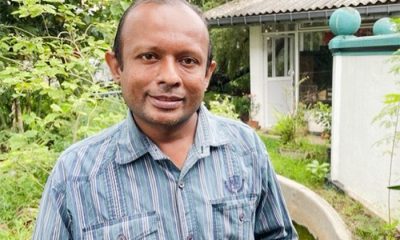
 News5 days ago
News5 days agoFSP lambasts Budget as extension of IMF austerity agenda at the expense of people

